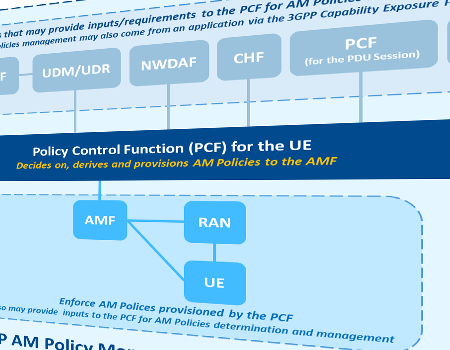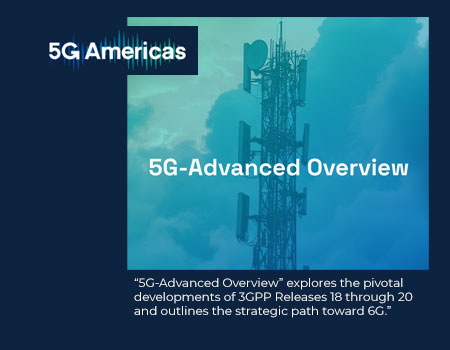By Patrick Merias, 3GPP MCC
Carrier aggregation, where a terminal receives or transmits on multiple component carriers (frequency blocks assigned to the same user), is a key technique introduced as part of LTE Advanced from release 10 onwards. The main advantages are:
- Improve the data rate per user (higher peak user throughput)
- Mitigate inter-cell interference (efficient use of spectrum)
- Enhance the network deployment (intra-band contiguous, intra-band non contiguous, inter-band non contiguous)
Carrier aggregation is a long successful story of both LTE/NR enhancement with new combinations of frequency band added in every release.
The following provides an overview of the CA technique evolution through the different 3GPP releases since its introduction.
Release 10 – LTE Advanced
| 460007 | Carrier Aggregation for LTE | LTE_CA | RP-100661 |
The following is supported:
- Two or more CCs are aggregated in order to support wider transmission bandwidths up to 100MHz
- Backward compatibility with Rel-8/9 carriers
- CC can have a bandwidth of 1.4, 3, 5, 10, 15 or 20 MHz
- Rel-10 signalling allows the aggregation of up to 5 DL CCs and 5 UL CCs, irrespective of intra- or inter-band CA.
- The number of DL CCs that can be configured depends on the DL aggregation capability of the UE;
- The number of UL CCs that can be configured depends on the UL aggregation capability of the UE;
- It is not possible to configure a UE with more UL CCs than DL CCs;
- CA can be used for both FDD and TDD modes
- FDD DL (intra-band & inter-band)
- FDD UL (intra-band only)
- TDD (intra-band only)
- All component carriers need to have the same duplex scheme and in the case of TDD, same uplink downlink configuration.
More detailed explanation is available in [1].
Release 11
| 510030 | LTE Carrier Aggregation Enhancements | LTE_CA_enh | RP-121999 |
Rel-10 TDD CA was restricted to the case of all component carriers having the same downlink-uplink configurations. For Rel-11 TDD CA, the downlink/uplink configuration is identical across component carriers in the same band and may be the same or different across component carriers in different bands.
The following is introduced as part of the Work Item:
- Support of the use of multiple timing advances in case of LTE uplink carrier aggregation
- A UE with single timing advance capability for CA can simultaneously receive and/or transmit on multiple CCs corresponding to multiple serving cells sharing the same timing advance (multiple serving cells grouped in one TAG);
- A UE with multiple timing advance capability for CA can simultaneously receive and/or transmit on multiple CCs corresponding to multiple serving cells with different timing advances (multiple serving cells grouped in multiple TAGs).
- A non-CA capable UE can receive on a single CC and transmit on a single CC corresponding to one serving cell only (one serving cell in one TAG).
- Support of inter-band carrier aggregation for TDD DL and UL including different uplink-downlink configurations on different bands
Release 12
| 600013 | LTE TDD-FDD joint operation including Carrier Aggregation | LTE_CA_TDD_FDD | RP-140465 |
The objective the Work Item is to enhance LTE TDD – FDD joint operation with LTE TDD-FDD carrier aggregation feature and potentially also with other TDD-FDD joint operation solutions – see the outcome of the initial scenario evaluation phase in [2].
The following is introduced as part of the Work Item:
- Introduce LTE TDD – FDD Carrier Aggregation support (aggregation of carriers with different frame structures) including either TDD or FDD as PCell(*) satisfying the following conditions:
- UEs supporting FDD and TDD carrier aggregation operation shall be able to access both legacy FDD and legacy TDD single mode carriers
- Legacy FDD UEs and UEs supporting FDD and TDD CA operation may camp on and connect the FDD carrier, which is part of the jointly operated FDD/TDD network
- Legacy TDD UEs and UEs supporting FDD and TDD CA operation may camp on and connect the TDD carrier, which is part of the jointly operated FDD/TDD network
Note that Dual Connectivity (DC) functionality was identified as possible other solutions for FDD-TDD joint operation enhancement. In DC, the UE is simultaneously connected to two different eNB base stations (on different carriers) by aggregating flows of the two eNB despite the latency caused by the backhaul (X2 link). The base stations do not need to be synchronized (and therefore may not be co-located). Main difference with the aggregation of carriers where the aggregation of flows is performed on the same base station in two different radio bands.
(*): Primary cell (PCell) in which the device initially performs the initial connection establishment procedure. Once the device is in connected mode, one or more secondary cells (SCells) can be configured to provide additional radio resources.
Release 13 – LTE Advanced Pro
| 660072 | LTE Carrier Aggregation Enhancement Beyond 5 Carriers | LTE_CA_enh_b5C | RP-151984 |
The following is supported:
- Two or more CCs are aggregated in order to support wider transmission bandwidths up to 640MHz
- Backward compatibility with Rel-8/9 carriers
- CC can still have a bandwidth of 1.4, 3, 5, 10, 15 or 20 MHz
- Rel-13 specifies the necessary mechanisms to enable the LTE carrier aggregation of up to 32 component carriers for the DL and UL, including:
- Enhancements to DL control signalling for up to 32 component carriers including both self-scheduling and cross-carrier scheduling, if any
- Enhancements to UL control signalling for up to 32 component carriers (enhancements to UCI signalling formats to support UCI feedback for up to 32 DL carriers
The Work Item considers FDD operation, TDD operation as well as TDD-FDD carrier aggregation operation when applicable.
Note Rel-13 also introduced License-Assisted Access (LAA), where CA can be used to aggregate downlink carriers in unlicensed frequency bands, primarily in the 5 GHz range, with carriers in licensed frequency bands.
Release 15
CA in 5G New Radio (NR).
The following is supported in Rel-15:
- Maximum number of configured Component Carriers for a UE is 16 for DL and 16 for UL.
- CC having different bandwidths (in both FR1 and FR2 frequency bands) and different duplex schemes, can be aggregated allowing for overall transmission bandwidths of up to (16 x 400 MHz) = 6.4 GHz
Table 1: NR channel bandwidth
| Frequency range | Frequency range | Supported channel bandwidth [MHz] |
| FR1 | 450 MHz – 6000 MHz | 5, 10, 15, 20, 25, 30, 40, 50, 60, 80, 90, 100 |
| FR2 | 24250 MHz – 52600 MHz | 50, 100, 200, 400 |
- Both CA within a frequency band (intra-band CA) and CA across frequency bands (inter-band CA) are supported.
- For the case of inter-band CA, CA with different numerologies is also supported.
As the users may not always require the high data rate provided by the NR wider bandwidths, NR defines the new concept of Bandwidth Part (BWP). UEs may operate in narrow bandwidth and when user demands more data, gNB to enable wider bandwidth. That makes NR an energy efficient solution despite the support of wideband operation.
- UE can be configured with maximum 4 BWP for DL and UL but at a given point of time only one BWP is active for downlink and one for uplink.
- BWP is a contiguous set of resource blocks on a given carrier.
- When gNB configures a BWP , it includes parameters: BWP Numerology (u) BWP bandwidth size Frequency location (NR-ARFCN), CORESET (Control Resource Set)
- The bandwidth of the BWP is configured for each UE according to the UE capability on supported maximum bandwidth, and hence multiple UEs having different bandwidth capabilities can be served in a single wideband NR carrier.
- Multiple BWPs with different numerologies can be multiplexed within a single NR carrier to support different types of services. The bandwidth of the BWP can be narrower than the supported maximum bandwidth for the UE so that UE power saving is achieved. In addition, BWP adaptation based on switching between BWPs having different bandwidths and/or numerologies is supported.
- NR does not support carrier aggregation with LTE and thus dual connectivity is needed to support aggregation of the LTE and NR throughput.
EN-DC operation is introduced as part of the Rel-15, to support simultaneous transmissions across LTE and NR.
Release 16
As part of Rel-16 NR radio enhancements, several configurations of CA have been introduced.
Further details on these new combinations can be found in TR 21.916 [3].
| 800074 | Rel-16 NR inter-band CA/Dual Connectivity for 2 bands DL with up to 2 bands UL | NR_CADC_R16_2BDL_xBUL | RP-191565 | |
| 830095 | Rel16 NR inter-band Carrier Aggregation for 3 bands DL with 1 band UL | NR_CA_R16_3BDL_1BUL | RP-191153 |
Acronyms:
| CA | Carrier Aggregation |
| CC | Component Carrier |
| DL | Downlink |
| FDD | Frequency Division Duplex (FDD) |
| LTE | Long Term Evolution |
| TAG | Timing Advance Group |
| TDD | Time Division Duplex |
| UCI | Uplink Control Information |
| UL | Uplink |
3GPP Work Plan:
See a listing of all work & study items here: https://www.3gpp.org/ftp/Information/WORK_PLAN/ and search for ‘LTE_CA‘ or ‘NR_CA’ in the acronym field of the Excel sheet there.
Working Groups:
RAN1, RAN2, RAN3, RAN4, RAN5
Releases:
Release 10 onwards.
See also:
- Carrier Aggregation explained: https://www.3gpp.org/technologies/keywords-acronyms/101-carrier-aggregation-explained
- TR 36.847: Study on LTE Time Division Duplex (TDD) - Frequency Division Duplex (FDD) joint operation including Carrier Aggregation (CA)
- TR 21.916: Release 16 Description; Summary of Rel-16 Work Items
IMPORTANT NOTE: Please be aware that these pages are snapshot of the work going on in 3GPP. The full picture of all work is contained in the Work Plan (https://www.3gpp.org/ftp/Information/WORK_PLAN/)


 Technology
Technology




